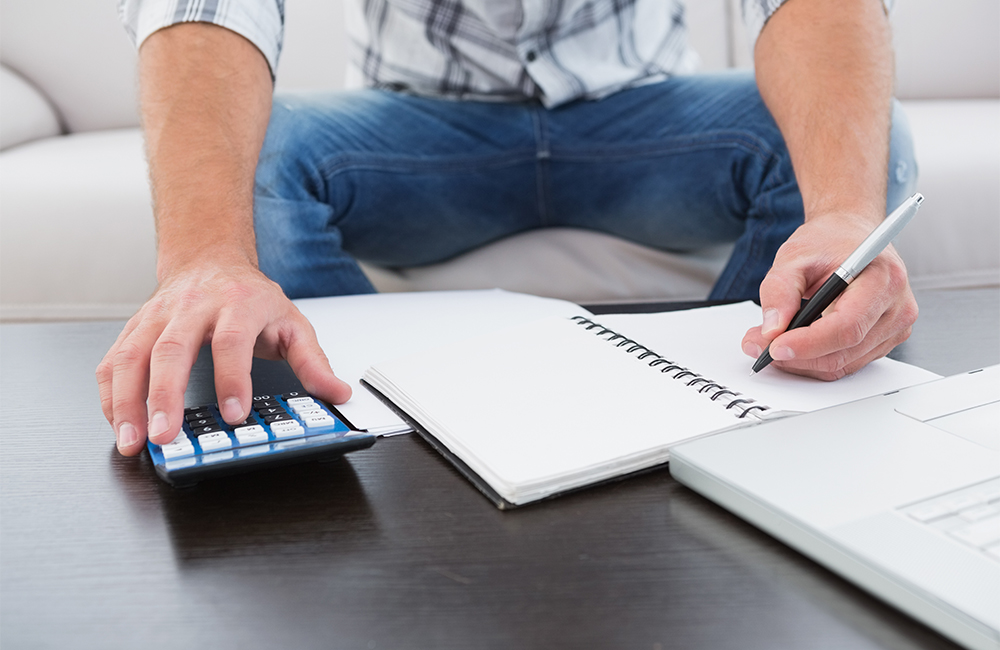Get a handle on your finances in weeks.
by Leo Babauta

Debt is a major problem for a lot of people these days. The problem is, even if they know they want to get out of it, they have a hard time figuring out how to start. If you fit this description, this 12-step program (and not the one you’re thinking) spells it out for you.
There isn’t one way to get out of debt, and the best program should be tailored to each person’s individual situation. But if you feel like you just don’t know how to begin, this program is designed to give you a sort of guide — one that should be adjusted to fit your financial situation.
It’s aimed not at people who have their finances together and are just trying to pay off a credit card or two. It’s aimed at those who have trouble finding any extra money to pay off debts, who seem to find themselves getting deeper and deeper into debt and don’t know how to stop it. In other words, it’s a bit of an emergency program.
- Acknowledge the problem: The first step is admitting you have a problem. The first week, all you have to do is say to yourself, “I have a problem with debt. I got into this because I spend money I don’t have. But I believe that there’s a way out, and I can do this. I can control my spending, make a plan and slowly get out of debt.” Now set aside 30 to 60 minutes a week to deal with your finances—make it a set day and time, and don’t let yourself miss this appointment.
- Stop digging: If you’re in a hole, stop digging, and that’s what you’re going to do this second week. For 30 days, see if you can stop any nonessential spending. If you have a major problem with credit cards, cut them up.
- Make small cutbacks: Take a look at things you normally buy, and see if you can cut out a few of them or spend less on them. Groceries? See if you can buy house brands instead of name brands. Coffee? Make it yourself at home instead of buying out. Lunch? Try packing it to work instead of eating out. Add up what your cutbacks will save you this month.
- Start an emergency fund: Set up a savings account, if you don’t have one already, for an emergency fund. Now take the amount you saved in step 3, and set up a regular automatic deposit from your checking to this emergency fund savings account for this amount. It’s important that before you start paying off debt, you have at least a small emergency fund. Aim for $1,000 at first. The reason: If unexpected expenses come up and you don’t have an emergency fund, you will skip your debt payments to pay for the unexpected expenses. The emergency fund protects your debt payments.
- Take inventory: This is a step that we don’t like to take. But take a deep breath. You need to do this. Remember what you said in step 1? You can do this. Set up a simple spreadsheet. In one column, list all of your debts—credit cards, medical bills, auto loan. In the second column, put the amounts you owe for each debt. In the third, put the minimum monthly payment, and put the percentage interest in the fourth column. Total up the second and third columns to see your total debt owed and how much you have to pay, at a minimum, toward debt each month.
- Make a spending plan: We don’t like to do this step, either. But it’s not going to be as painful as we think. Set up another simple spreadsheet. In one column, list your monthly bills—rent or mortgage, auto payment, utilities, cable. Then list variable expenses such as groceries, gas, eating out. In the second column, put down the amounts for each. Be sure to also include your minimum debt payments and your emergency fund deposit. Now, list your income sources and monthly amounts. There. You’ve got a temporary spending plan. Now, if the expenses are greater than the income, you’ll need to make adjustments until the expenses are equal to or less than the income.
- Control spending: You may find it hard to keep track of your spending and ensure that you’re sticking to your spending plan. Here’s the key: First do the emergency fund deposit. Then do the debt payments. Then do your monthly bills. Then withdraw the variable amounts in cash, and put them into separate envelopes. It’s old-fashioned, but it works, as you don’t have to worry about overspending. When your envelope is empty, you can’t spend anymore.
- Pay bills on time: It’s important, if you want to get out of debt, to start paying all your bills on time. If you follow the payment plan outlined in step 7, your bills should be paid before you get to any discretionary spending categories. If you have trouble remembering, try one of these methods: Pay bills as soon as they come in—take them to the computer and pay them online or write out a check and prepare the envelope to be mailed the next day; set up a reminder in your calendar program to tell you when bills are due.
- Start a snowball: Now that your finances are relatively under control, you can start a debt snowball. Here’s what to do: If you can find at least $100 from your spending plan, use that to start your debt snowball. You may need to cut back on discretionary spending (as you did in steps 2 and 3). Or, once your emergency fund is at $1,000, you can use the amount you were putting into that account for your debt snowball. Take a look at your debt spreadsheet. First, order the debts from the smallest amount owed to the largest. Now, look at your smallest debt owed—you will start by paying $100 (your debt snowball) plus the minimum monthly payment on that debt each month until the debt is paid off. When the debt is paid off, you will take the amount you were paying on it and pay it to your next smallest debt until it is paid off. Continue to pay off your debts, one at a time, until they are all paid off.
- Find larger cuts: Look at your larger expenses. Are there ways you can eliminate or cut back on them? Can you sell your car for a smaller, used model? Can you find a smaller house or apartment to rent? Can you sell your house and rent a cheaper one? Can you get by with one car? Can you eliminate some services you’ve been using? Whatever cuts you make, apply that amount to your debt snowball. Don’t spend it!
- Grow your income: Look at ways you can make money on the side, or ask for a raise or get a better job. Are there ways you can start a small business online? Sell your valuables on eBay? Start freelancing on the side? Get a part-time job? This only has to be temporary, but the more money you make, the faster you’ll get out of debt. Be sure to apply your new income to your debt snowball.
- Track your progress: On your debt spreadsheet, be sure to update it every payday (or however often you pay debt) so that you can see your shrinking debt amount. You should be able to calculate how many months you have left before you’re completely out of debt. It may be a long ways off, but it’s within sight!
Bonus step: Celebrate! It’s important to celebrate, not only when you’re out of debt but also along the way as you eliminate each debt. Have fun! Make this an adventure. It can be amazingly satisfying to stop spending and gain control of your finances instead. Find free entertainment, make it a challenge to be frugal and save money and find cheap used stuff. Pat yourself on the back along the way.
Leo Babauta is the founder of Zen Habits, a website about simplicity and happiness, health and fitness, motivation and inspiration, frugality and family life.
Reprinted with permission from zenhabits.net.



No responses yet